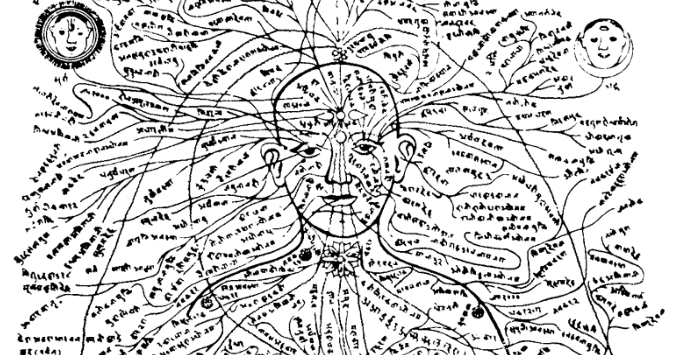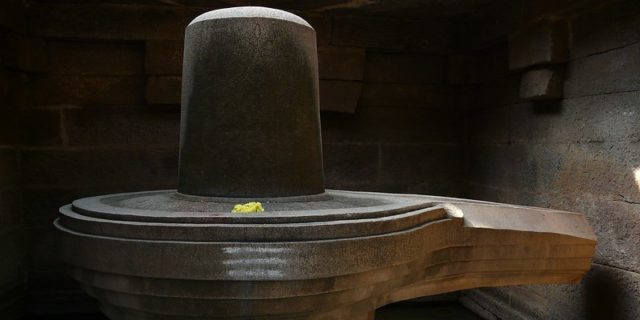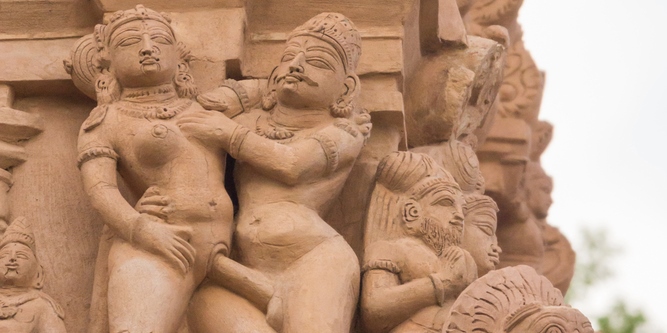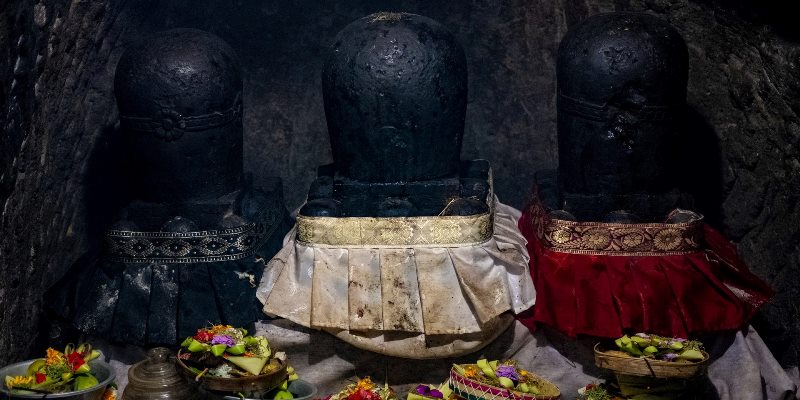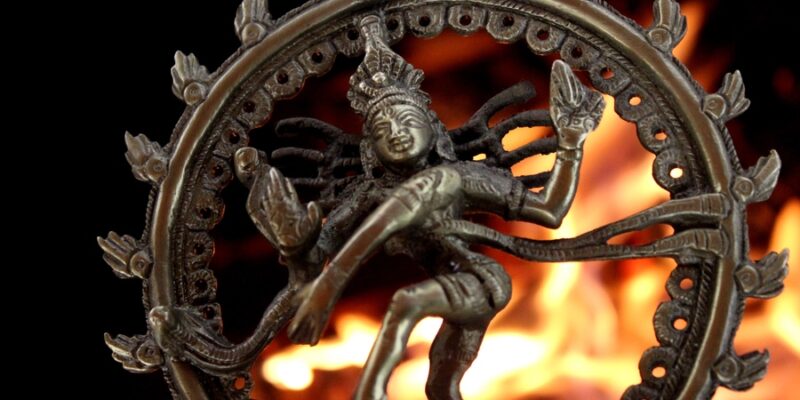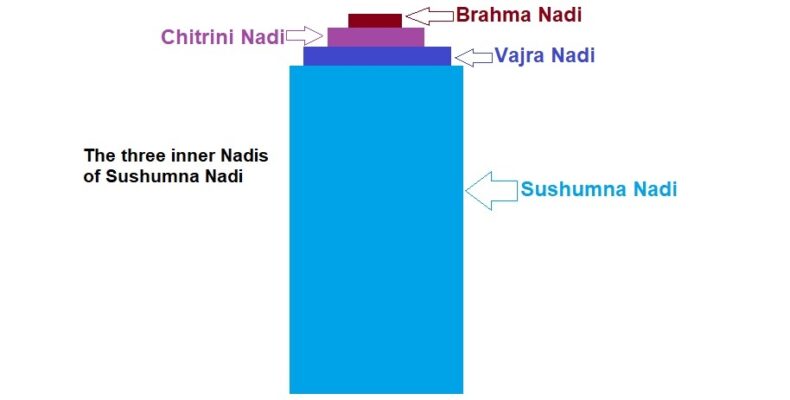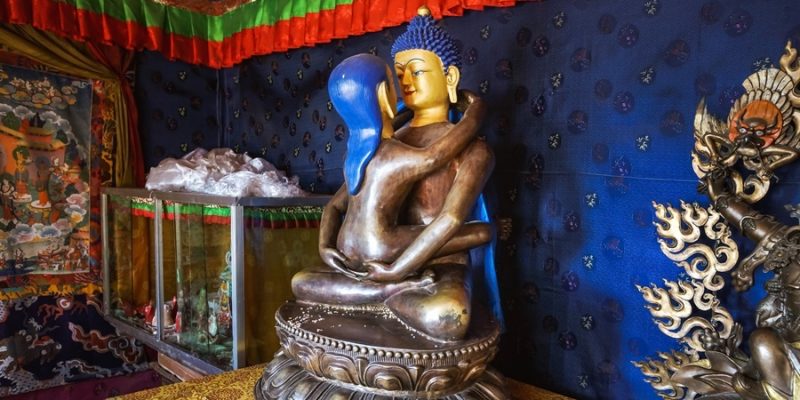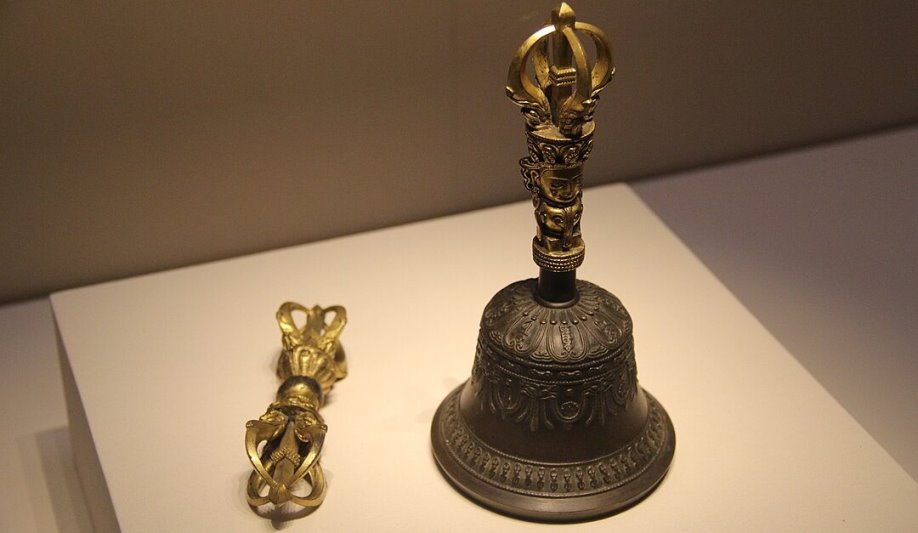
In this post, we’ll take a look at the use, meaning, difference, and similarity of the terms Lingam (Linga, Shiva Linga, or Lingham) and Vajra in a Tantric context.
You’ll often see that Tantric Massage providers offer either Lingam Massage or Vajra Healing. To a lesser degree you will find offerings labelled as Vajra Massage, but then again it’s not uncommon to find Lingam Healing offerings.
Lingam Massage versus Vajra Healing
In fact, Tantra Massage practitioners usually don’t make a difference between the terms Lingam and Vajra. Lingam Massage, Vajra Massage, or Lingam Healing and Vajra Healing simply point to a sensual erotic Tantric Manhood Massage treatment with a spiritual touch.

Nevertheless, Vajra Healing — used outside the context of Tantric Massage — means something quite different, about which we will talk later on in this post.
At any rate, in the realm of Tantra Massage, on the most narrow level, the words Lingam and Vajra refer to the external male genital organ, that is — the penis. On a broader Tantric spiritual level, Lingam and Vajra rather point to masculine energies as opposed to feminine energies (the latter represented by the Yoni) being one part of a whole, masculine and feminine together forming a sacred, divine unity in oneness.
Mind that the use of the words masculine and feminine is only a means to refer to opposite energies (or better said — complementary energies), such as mental versus spiritual, creative versus destructive, ideation and materialization, giving and receiving, active versus passive, and so on, which could be compared with the Chinese Taoist Yin Yang concept.
Hence, masculine and feminine is not so much related to being a man or a woman. As it is, both men and women have and express “masculine” and “feminine” energies, each in different degrees.
Meaning and Use of the Terms Lingam and Vajra
Literally translated, the Sanskrit word Lingam (or Linga) can mean gender, phallus, sign, mark, feature, proof, evidence, effect, result, lustful, penis, male organ of generation, among a range of other meanings depending on the context.

However, in the most common sense in Tantra, Yoga, and Ayurveda, the term Lingam usually refers to the penis, the male organ of generation, or to the “male aspect.” Notably in Tantra, the Linga also symbolizes the deity Lord Shiva (as the male principle and energy), who’s the consort of the deity Shakti (Yoni, the female principle and energy).
The Sanskrit term Vajra can mean hard, diamond, adamantine, steel, severe, forked, cross, destructive weapon, gruel, pillar, column, thunderbolt, club, among other meanings depending on the context.
In Hinduism, the Vajra is a legendary and ritualistic weapon used by the Gods, symbolizing the properties of a diamond (indestructible) and a thunderbolt (force). It’s a type of club (stick or wand) with a ribbed or forked spherical head. The ribs can form a ball-shaped top, or they may be separate (as a fork) and end in sharp points with which one can stab.
In Yoga, Vajra is also a Prana Energy Channel — a Yoga Nadi called Vajra Nadi — being one of the inner Nadis of Sushumna Nadi. In some classical Yoga scriptures it’s stated that Vajra goes down to the genitals, apart from its trajectory to the head, even literally mentioning the Lingam as an end point of this Nadi.
In its symbolic meaning, Vajra is used in Tantric Buddhism (Vajrayana Buddhism from Tibet), Hinduism, and in Tantra, where it refers to the male principle of creation, knowledge, potency, or the nature of reality.
In Tantric Buddhism, you’ll often find a simultaneous depiction of a Vajra and Bell (as shown in the lead image of this post), just as you usually find the Lingam and Yoni symbol displayed together. The ritual Bell (in Sanskrit called Ghanta) symbolizes the female principle (Yoni).
In view of the above, it has probably now become clear why the word Lingam and Vajra are used as synonyms.
More on Vajra Healing
Vajra Healing can also refer to healing rituals that are performed by using a Vajra stick or Vajra club, which is basically a Tantric Buddhist ritual, and not related to Tantric Massage or Lingam Massage (or Vajra Massage).
With the Vajra stick or wand used in a ritual context, for instance by placing the Vajra on the chest, one aims at eliminating ignorance, greed, cruelty, ego-centeredness, and so on, in order to prepare the receiver for the spiritual path.
In Tibetan Buddhist religious traditions, the Vajra (in Tibet known as Dorje) and Bell are often used together. During chanting of mantras the Bell and Vajra participate in a variety of different ritualistic ways, usually as a means to represent the union of the male and female principles, that is, spiritual enlightenment.






